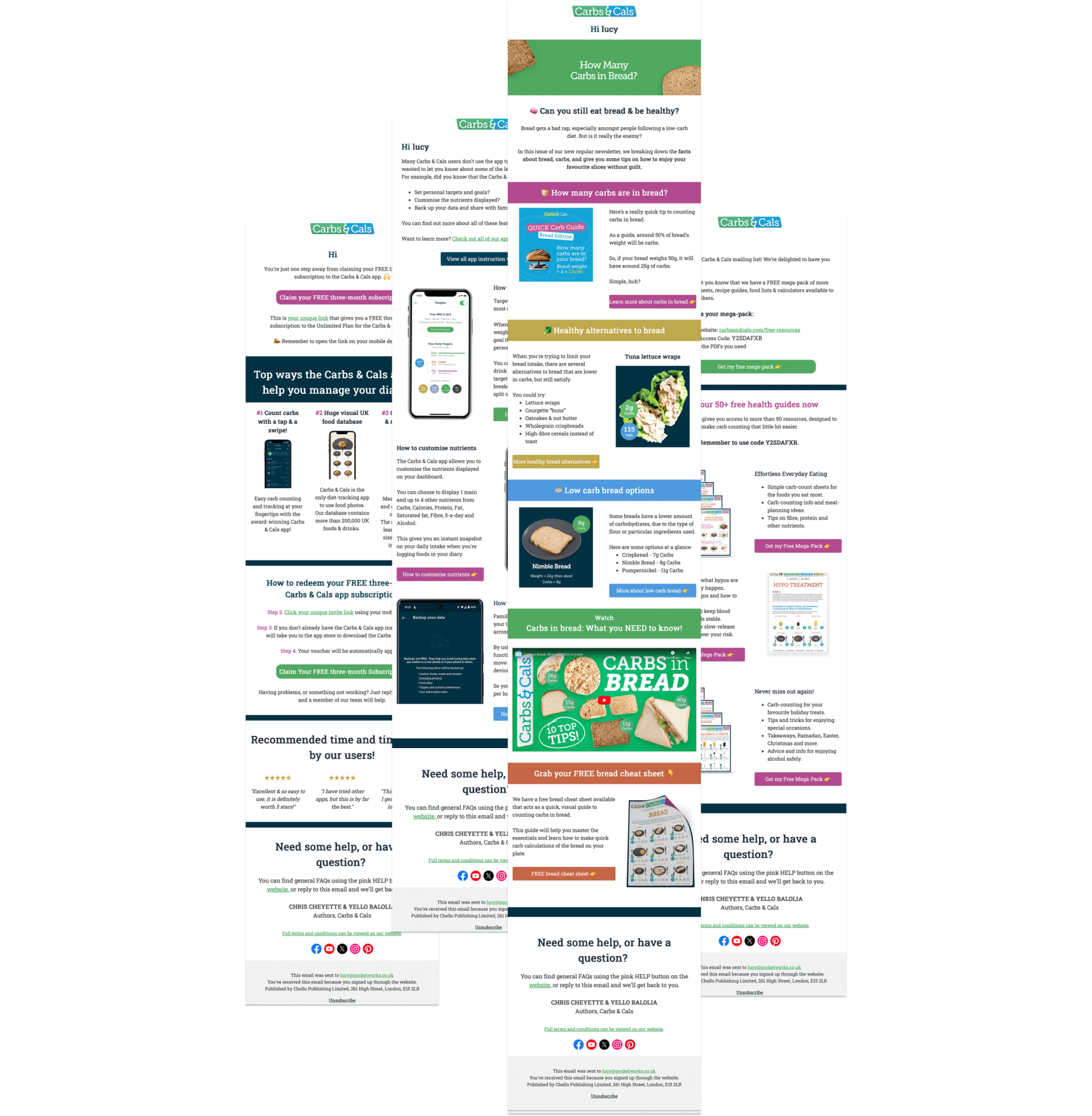Vegetables are nutritional powerhouses that form the foundation of any healthy diet, packed with essential vitamins, minerals, and fibre while being naturally low in calories and carbohydrates.
Whether you’re managing diabetes, following a low-carb lifestyle, or simply trying to eat more healthily, understanding the carbs in vegetables can help you make informed choices that support your goals.
This guide will teach you about the carb content of different vegetables, discover which ones are best for a low-carb diet, and learn creative ways to incorporate more vegetables into your diet.
How many carbs in vegetables?
Vegetables are an important part of any diet. They are low in calories and provide a range of nutrients, vitamins and minerals linked with health and wellbeing. In addition, they can help prevent certain diseases such as type 2 diabetes, heart disease and some cancers.
Vegetables are generally low in carbohydrates, making them ideal for low carb diets, and are also a good source of fibre, which is important for gut health. Root vegetables, such as carrots and swede, tend to have a higher amount of carbohydrates compared to leafy green vegetables and those grown above ground.
People living with type 1 diabetes who are monitoring their carbohydrate intake are normally advised not to count the carbs in vegetables, as the carb amount in a typical portion is very low and the high fibre content results in a very minimal effect on blood sugar levels.
Please note: Foods such as potatoes, yams and cassava are not included in the vegetable section of the Eatwell Plate or government advice for vegetable consumption. Instead, they are put into the bread, potato and rice category. In addition, despite technically being fruits, tomatoes and avocados are traditionally thought of as vegetables and will be discussed here.
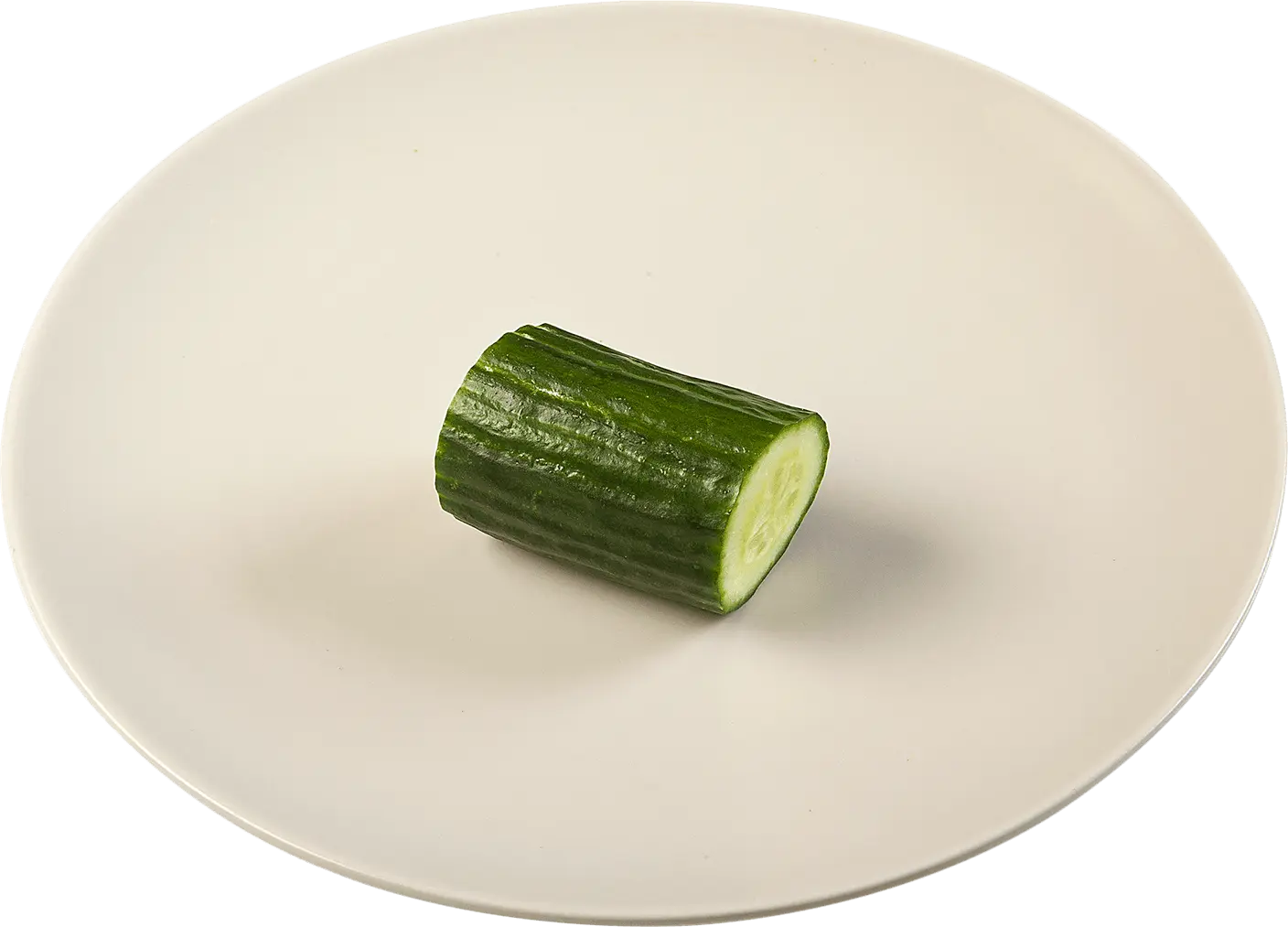
1g
Carbs
Cucumber
Weight = 80g
Carbs = 1g / Cals = 11 / Fibre = 1g
Carbs in above-ground vegetables
There is a huge variety of vegetables that are eaten in the UK. Popular options include broccoli, sweetcorn, peppers, mushrooms, leeks, cabbage, peas, cauliflower, Brussels sprouts and asparagus. The low carb count and calorie content, along with the high fibre, means that you can include a large portion and variety of vegetables in your diet without adding lots of carbs.
Broccoli is a member of the cruciferous vegetable family, which includes kale, Brussels sprouts, radishes and cabbage. Broccoli is low in carbs, full of nutrients and has a range of health benefits. Peppers are incredibly nutritious and contain antioxidants. They are a great source of vitamin A and vitamin C. Green, orange and yellow peppers all have similar carb count and nutrient profiles. Green beans are part of the legume family, along with beans and lentils. However, they have significantly fewer carbs compared to most other legumes.
Leafy greens such as kale, spinach and salad leaves are popular vegetable options. Kale is extremely nutrient-dense and has a high nutritional value. It is full of antioxidants that help to lower blood pressure and protect against heart disease. Lettuce is one of the lowest-carb vegetables around and is a great source of vitamins. Spinach is another leafy green that is low in carbs and has many health benefits. It is an excellent source of several vitamins and minerals, such as vitamin K.
In the examples below, you can see that sweetcorn and peas have a higher carb count compared to the other vegetables. However, they are also high in fibre so will have a low impact on blood glucose levels.
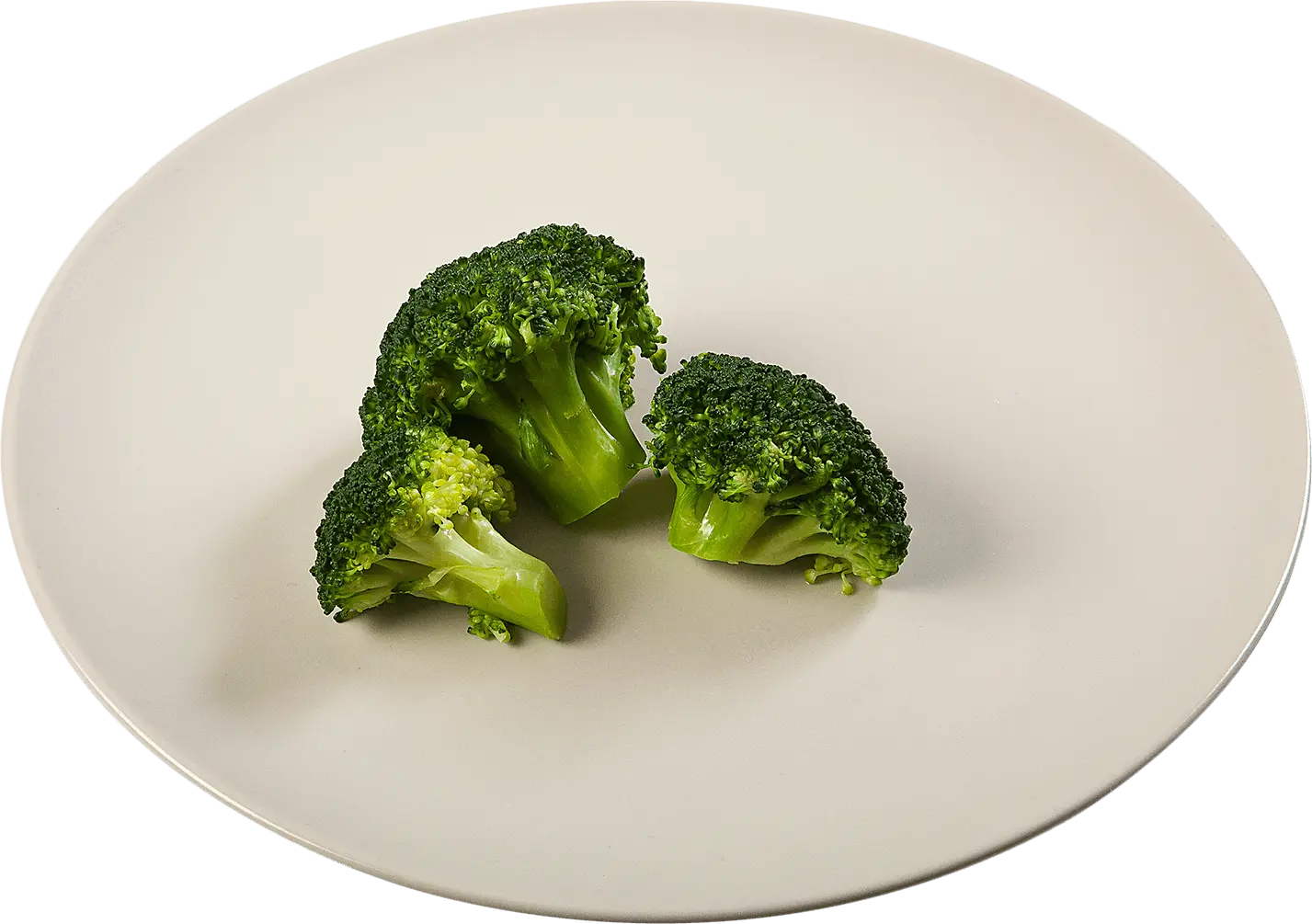
2g
Carbs
Broccoli
Weight = 80g
Carbs = 2g
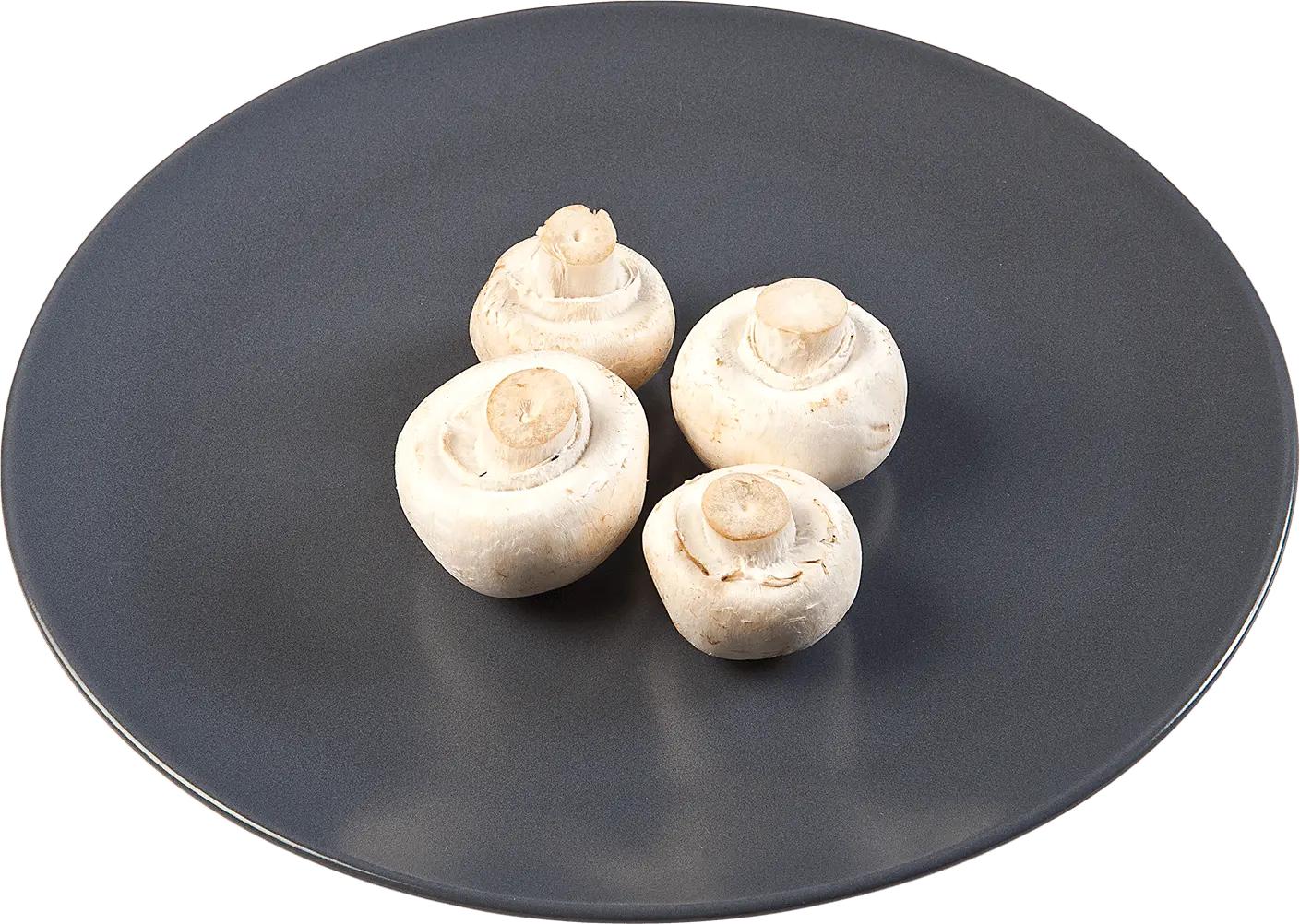
0g
Carbs
Mushrooms
Weight = 80g
Carbs = 0g
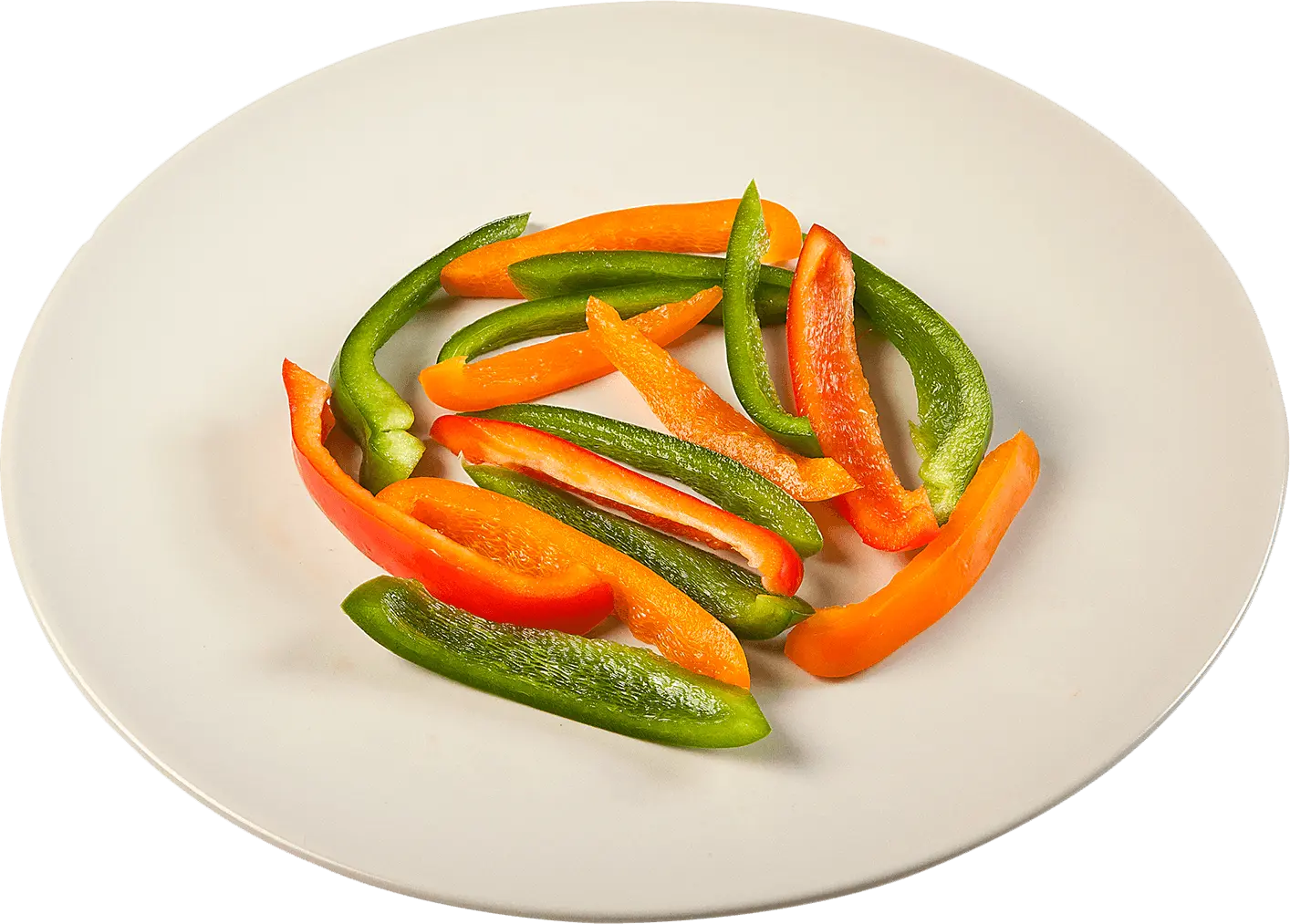
2g
Carbs
Peppers (raw)
Weight = 80g
Carbs = 2g
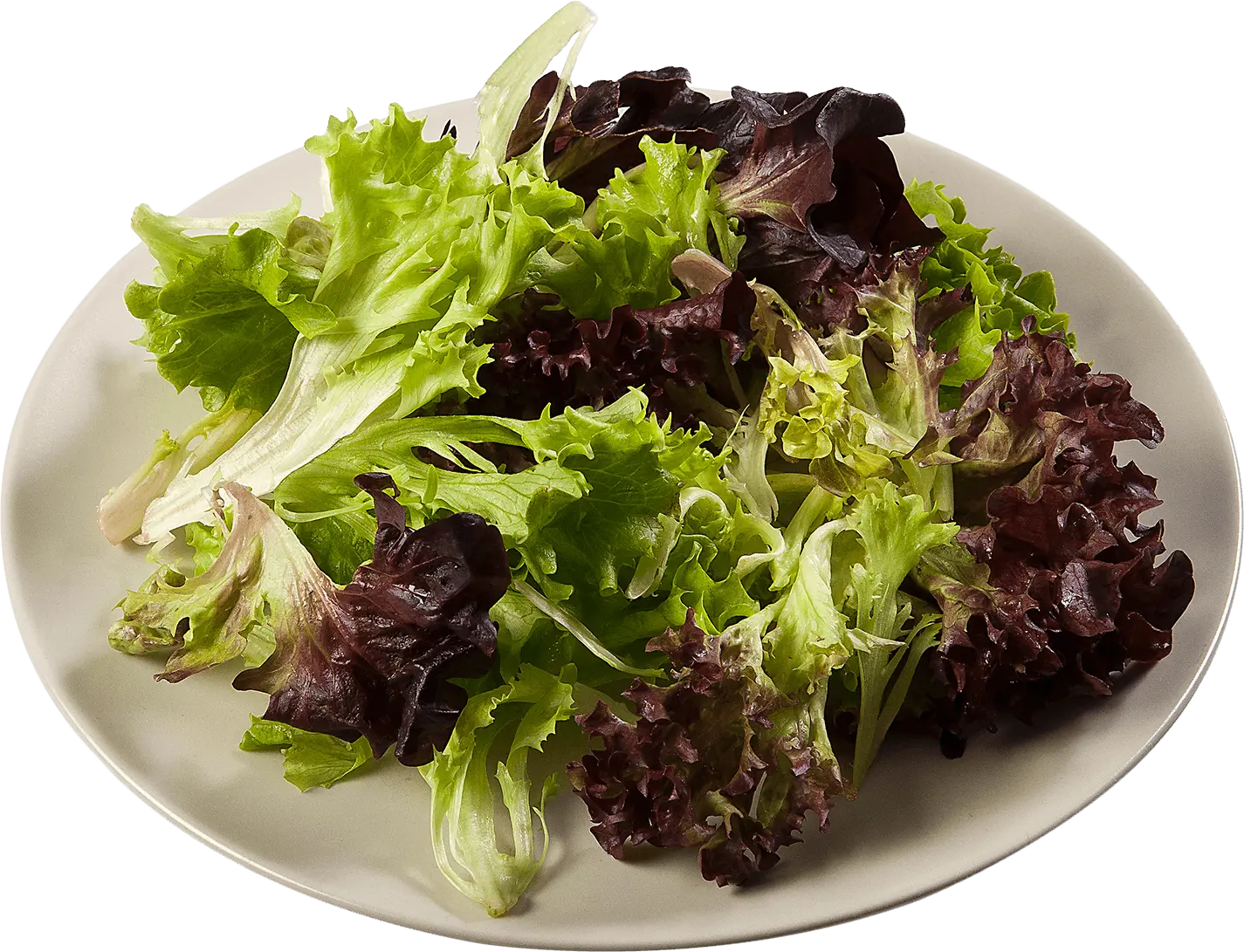
1g
Carbs
Salad Leaves
Weight = 60g
Carbs = 1g
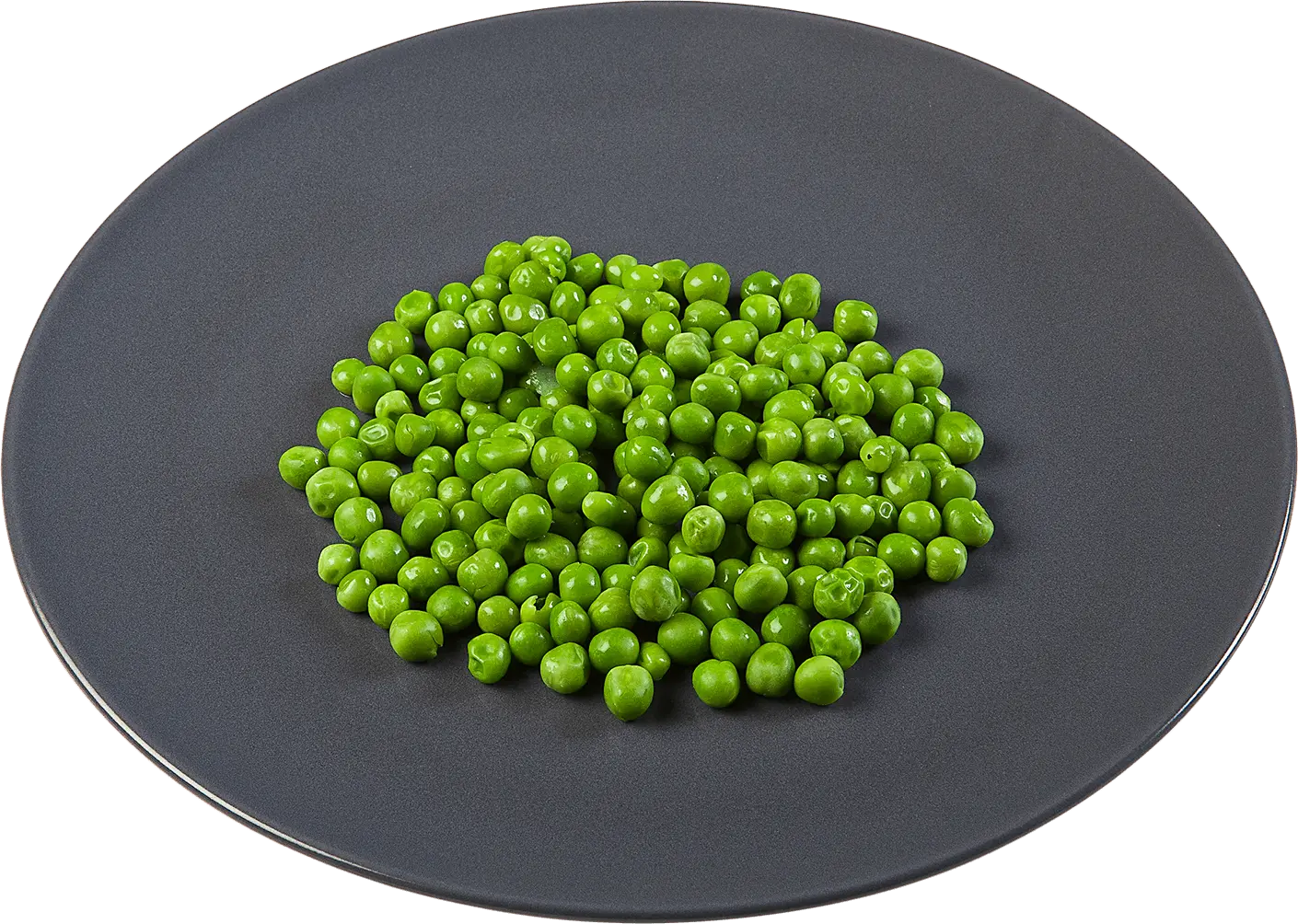
8g
Carbs
Peas
Weight = 80g
Carbs = 8g
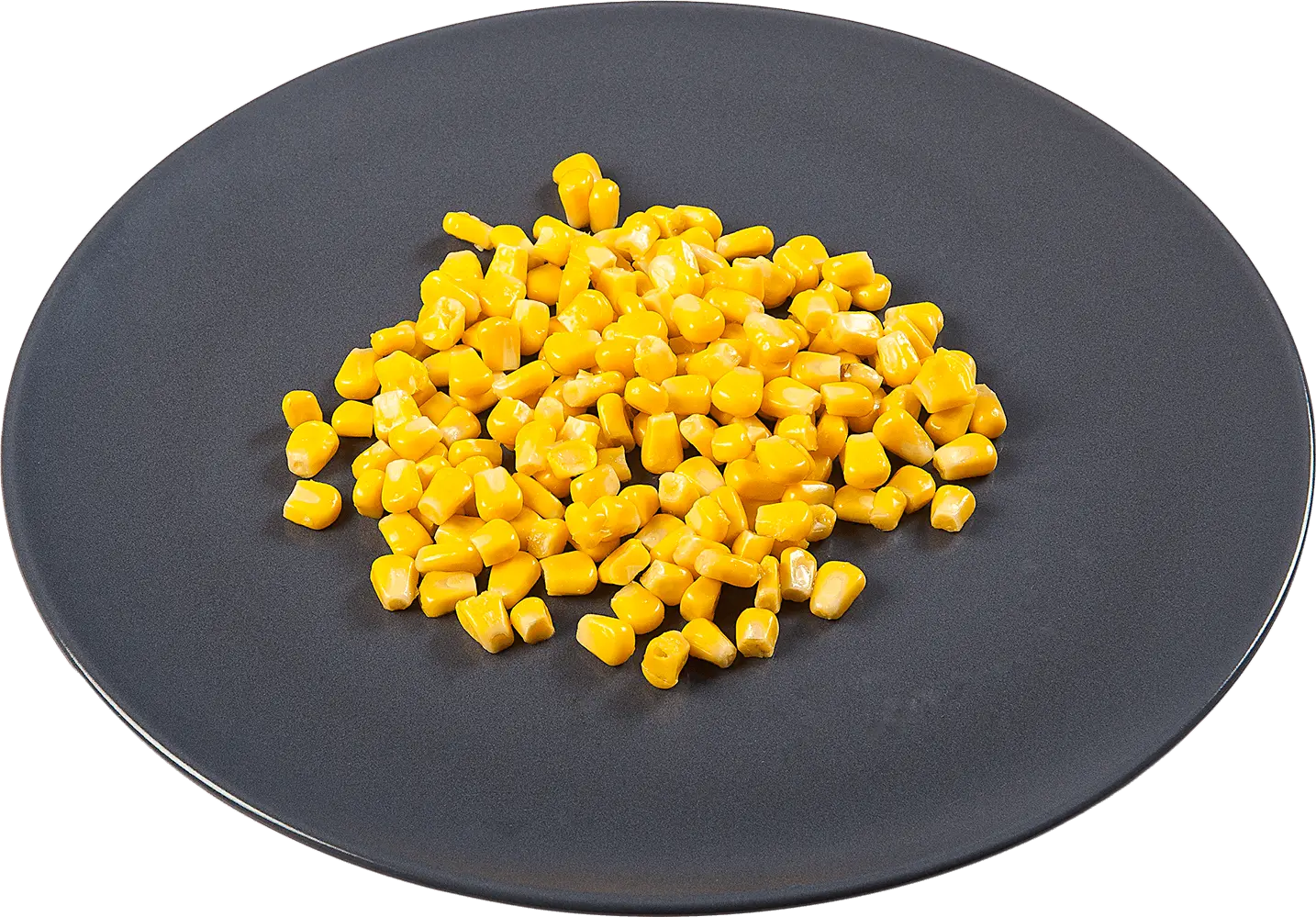
11g
Carbs
Sweetcorn
Weight = 80g
Carbs = 11g
Carbs in root vegetables
Root vegetables are typically vegetables that grow below ground. These include onion, shallots, carrots, parsnip, beetroot, swede, turnip, Jerusalem artichokes, and celeriac.
Parsnips and Jerusalem artichokes have a higher number of total carbs than other root vegetables. Jerusalem artichokes are high in fibre and aid in heart health. Onions are fairly high in carbs by weight but are usually only eaten in small amounts. Onions are high in the antioxidant quercetin, which lowers blood pressure.
Root vegetables tend to be more starchy and therefore have a higher amount of carbohydrates, albeit still a low amount compared to foods such as potatoes, rice, bread and cereals. In addition, root vegetables have many health benefits.
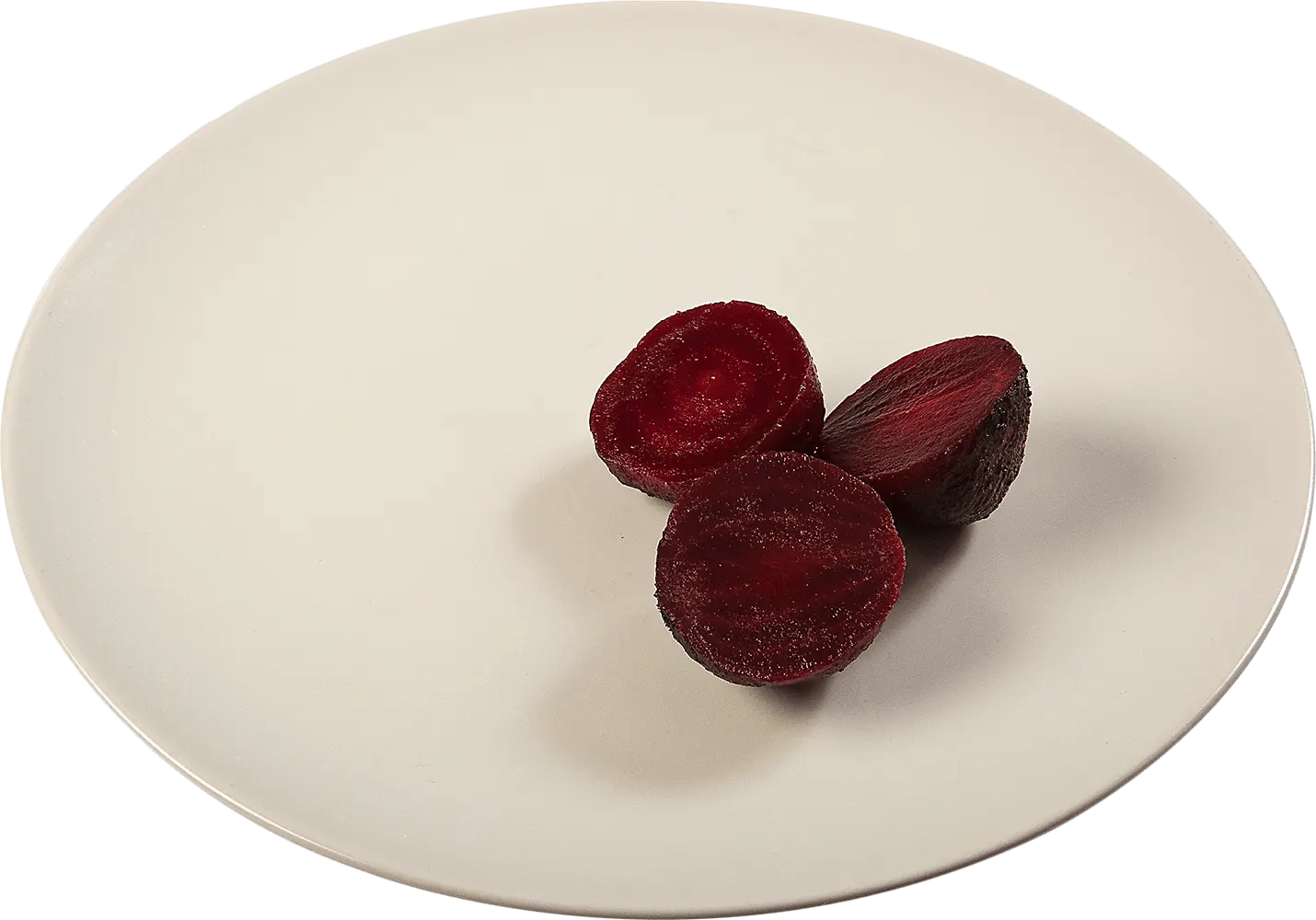
8g
Carbs
Beetroot
Weight = 80g
Carbs = 8g
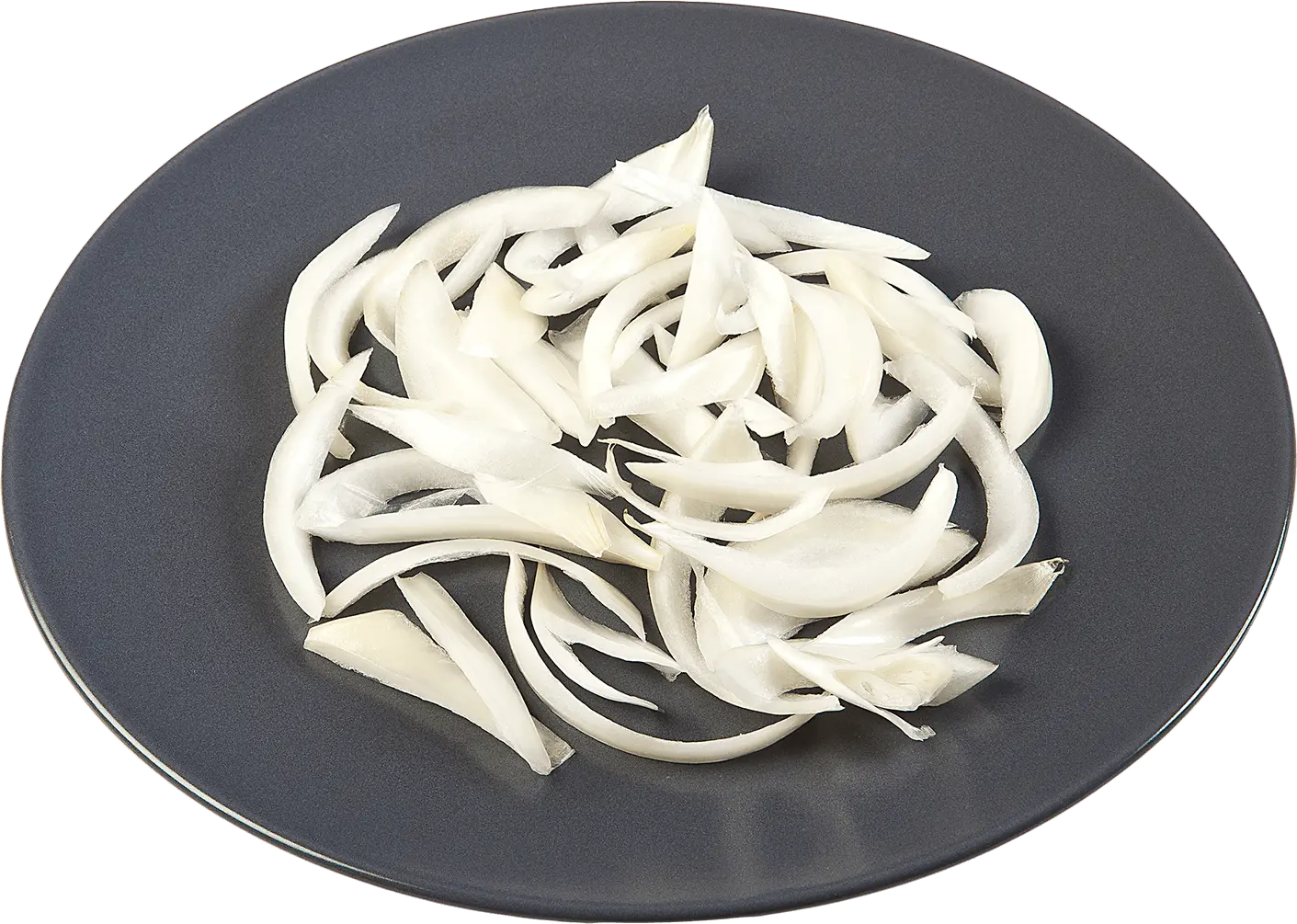
6g
Carbs
Onion (raw)
Weight = 80g
Carbs = 6g
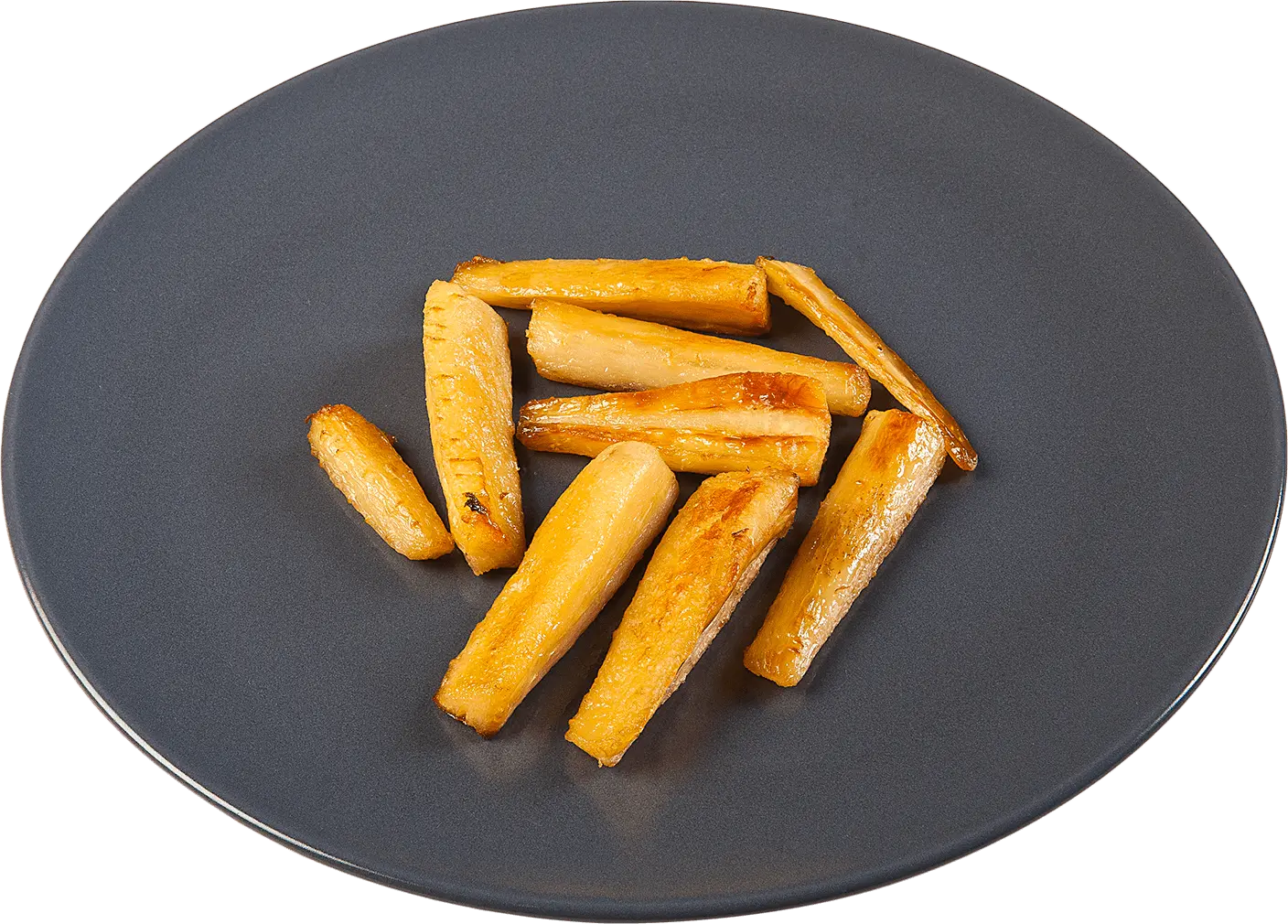
15g
Carbs
Parsnip (roasted)
Weight = 80g
Carbs = 15g
So, what are low carb vegetables?
If you are following a low carb diet for weight loss or other health benefits, you may wish to limit any high carb vegetables and choose vegetables that have a minimum carb content, such as less than 5g of carbohydrates per portion. Fortunately, with an 80g portion, most vegetables will fit into this category. Even if you are on a low carb diet, it is still recommended that you eat a wide variety of vegetables for their nutritional value.
Asparagus, Brussels sprouts, green cabbage and courgettes are all excellent examples of low carb vegetables. Both Brussels sprouts and cabbage are cruciferous vegetables and have some impressive health benefits. Both are excellent sources of vitamin C and vitamin K.
Courgettes are a common type of summer squash that are low in carbs and an excellent source of vitamin C. Asparagus is a delicious spring vegetable that is a great source of vitamins A, C and K. Leafy greens, salad items, and broccoli are also good options.
All the examples shown below are for 1 portion (80g) of different vegetables, and all have less than 5g of carbs per portion.
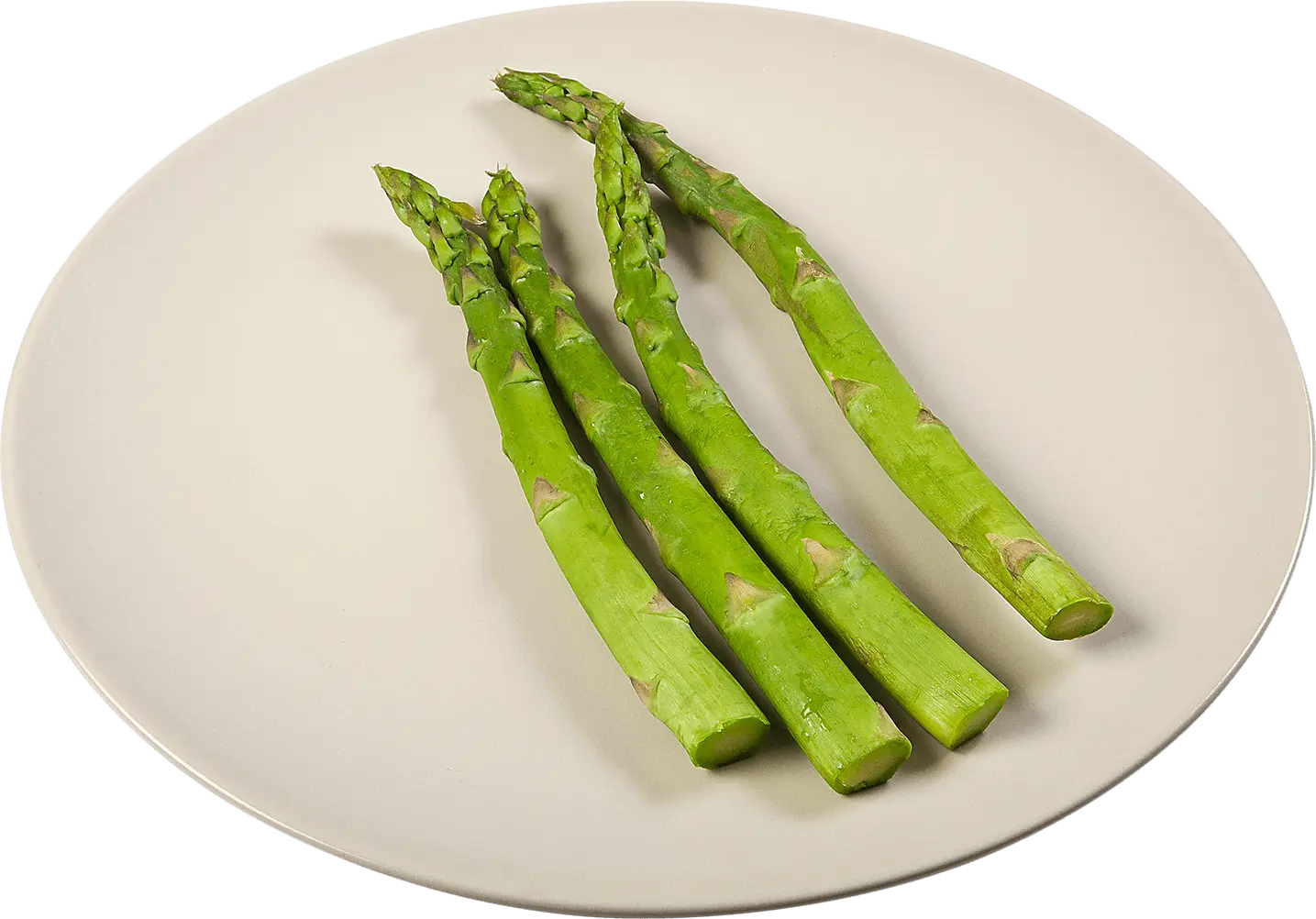
1g
Carbs
Asparagus
Weight = 80g
Carbs = 1g
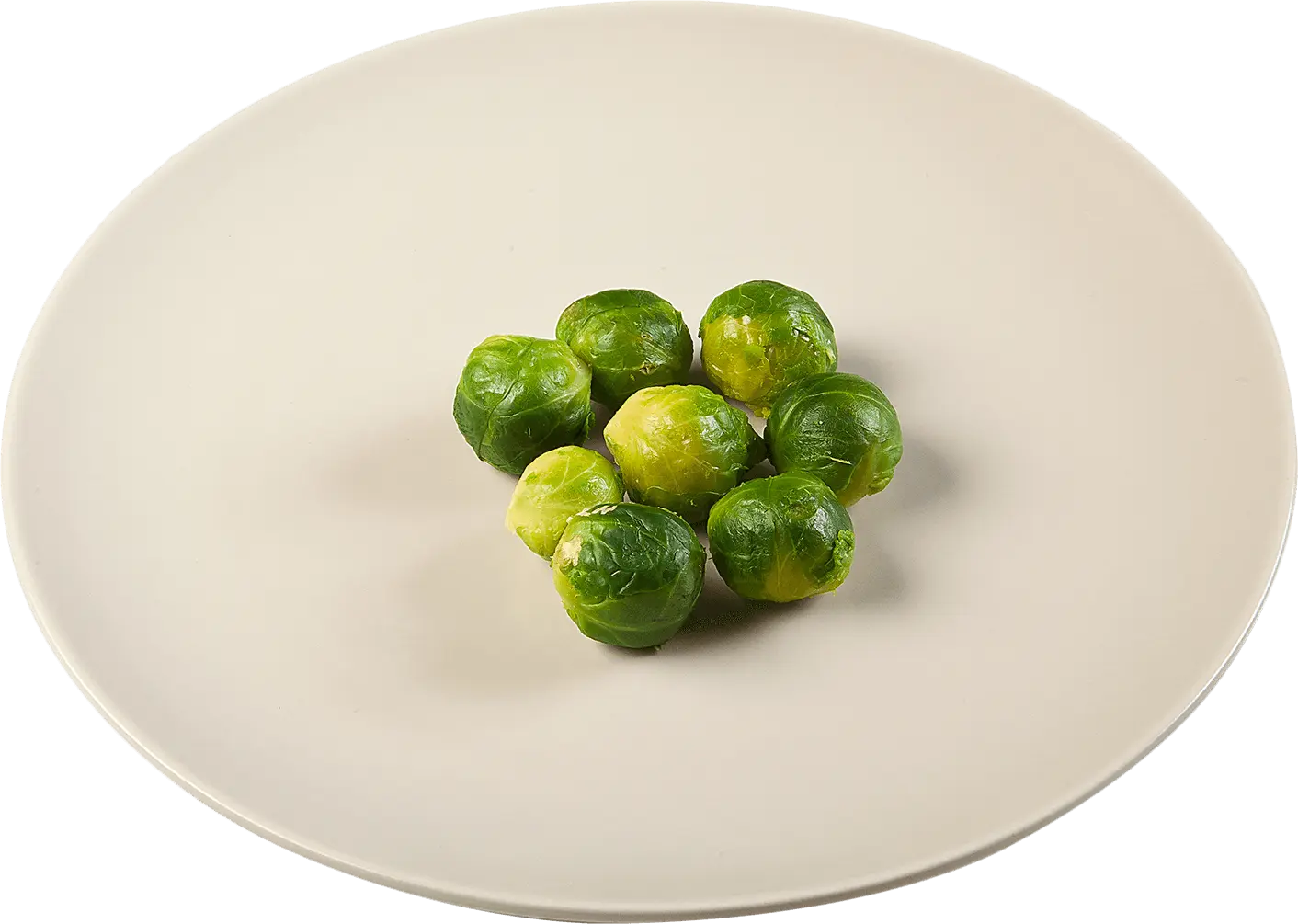
3g
Carbs
Brussels Sprouts
Weight = 80g
Carbs = 3g
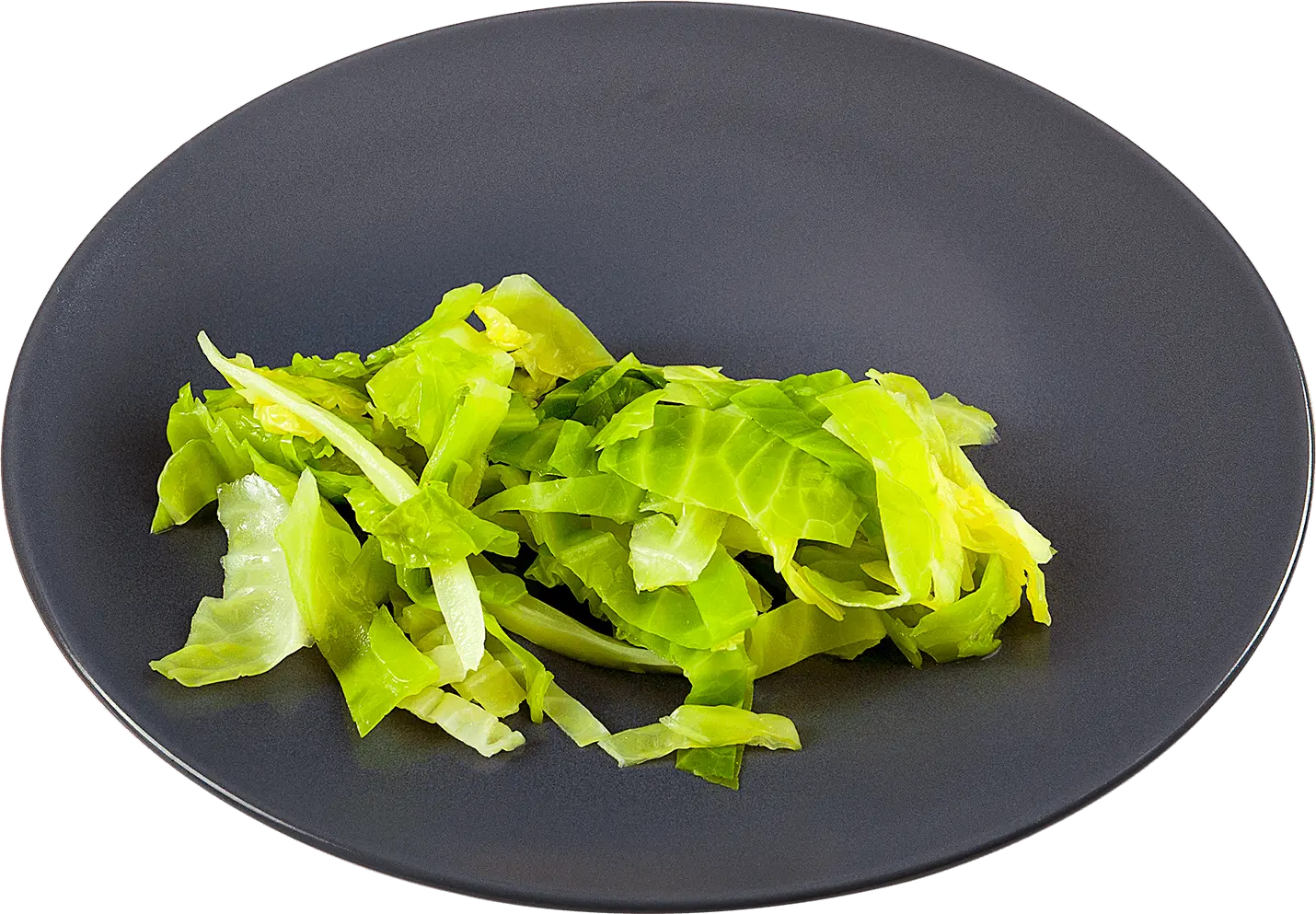
2g
Carbs
Cabbage
Weight = 80g
Carbs = 2g
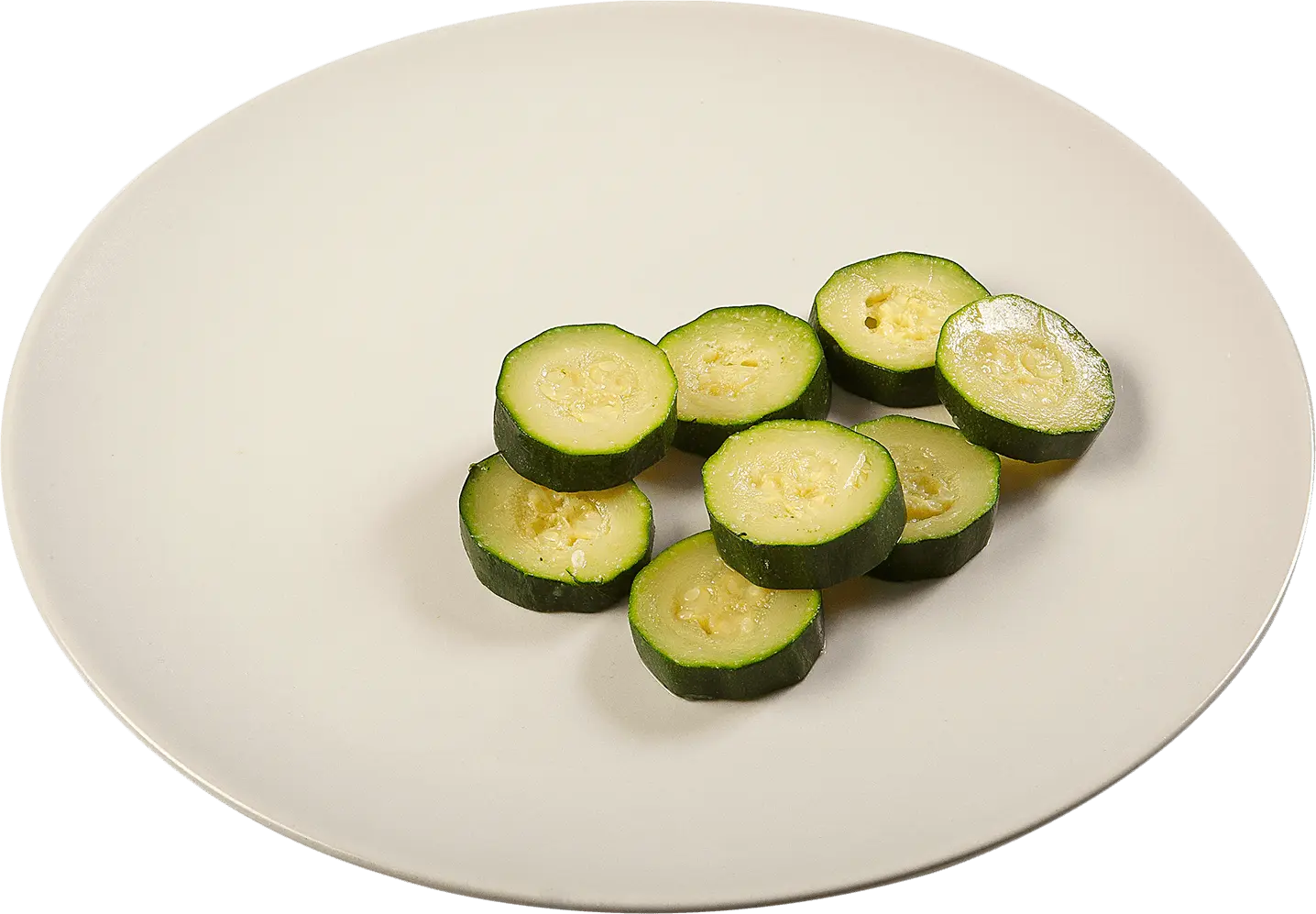
2g
Carbs
Courgette
Weight = 80g
Carbs = 2g
Low carb vegetable sticks & dips
Vegetables make a great low carb snack option when combined with different dips or spreads, such as celery and nut butter. Some dips, like houmous, will add carbs to your snack. However, if the carbs are coming from high fibre sources and if you have a smaller portion, then it will still be suitable for a low carb diet.
Like tomatoes, avocado is a fruit, but we have included it here as it is usually eaten with salad or can be made into guacamole. Avocados are rich in oleic acid, a type of monounsaturated fat that has beneficial effects on health. They’re also a good source of vitamin C, folate and potassium.
The examples below illustrate 3 low carb snack options using vegetables, each under 10g of carbs.

1g
Carbs
Celery & Nut Butter
Weight = 90g
Carbs = 1g
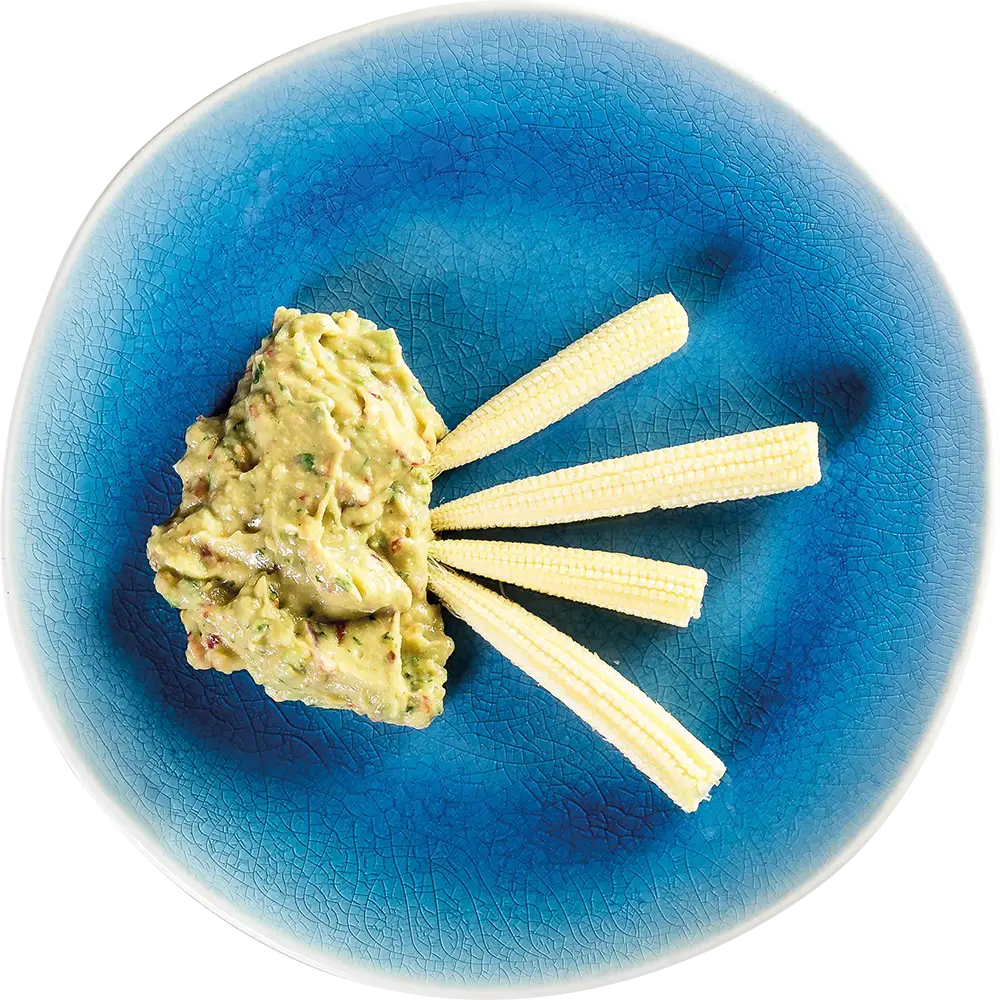
6g
Carbs
Guacamole
Weight = 150g
Carbs = 6g
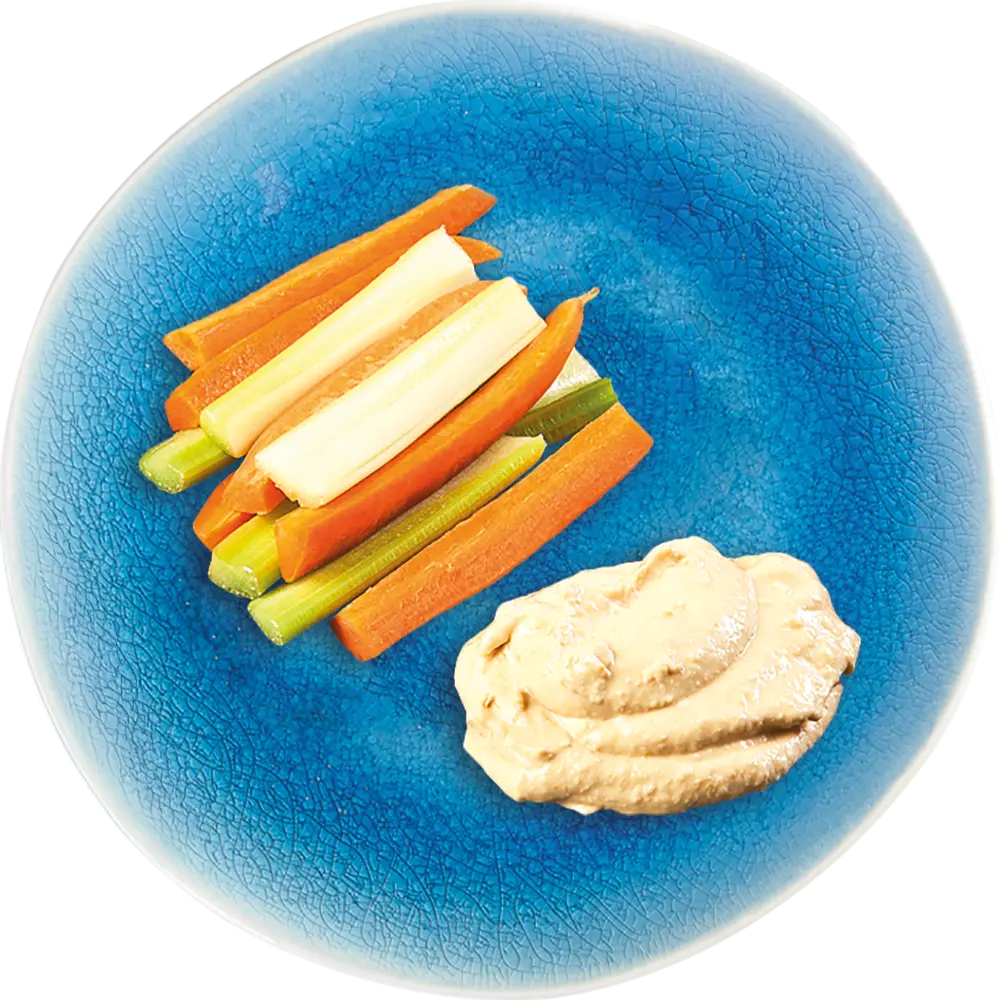
6g
Carbs
Veg & Houmous
Weight = 120g
Carbs = 6g
Low carb vegetable smoothies
Vegetables are a great addition to a smoothie and can help boost your 5-a-day and add additional vitamins and minerals. If you are following a low carb diet, a vegetable-based smoothie is a great alternative to ones containing fruit, which will contain more carbs. Or you can have a combination of fruit and veggies.
The Carbs & Cals Smoothies book has loads of great ideas for using vegetables in your smoothies.
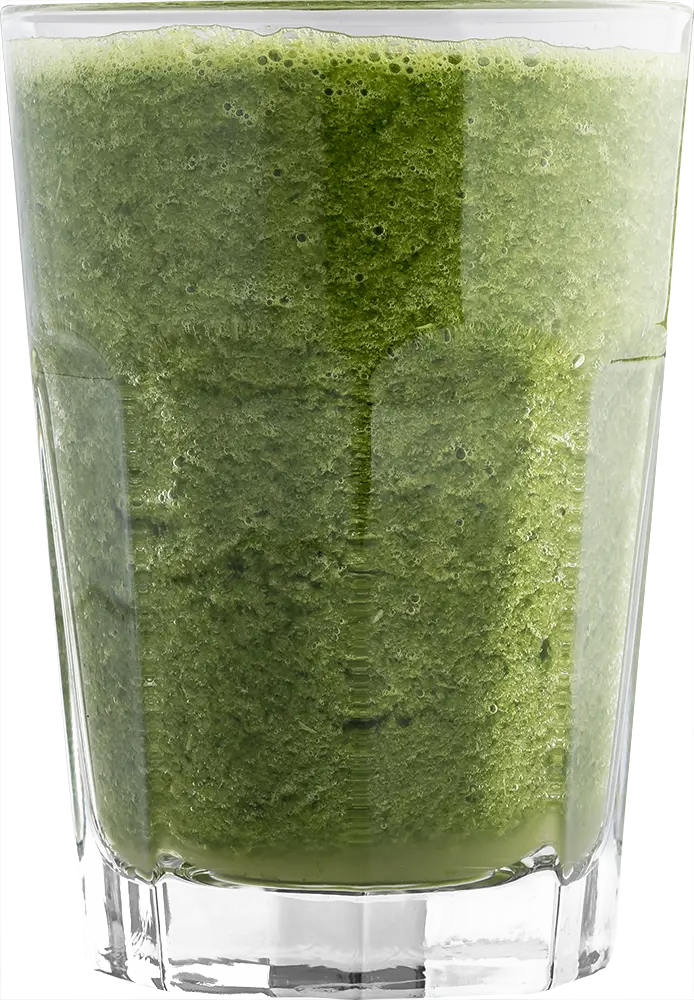
4g
Carbs
Hey Pesto! Smoothie
Weight = 395g
Carbs = 4g
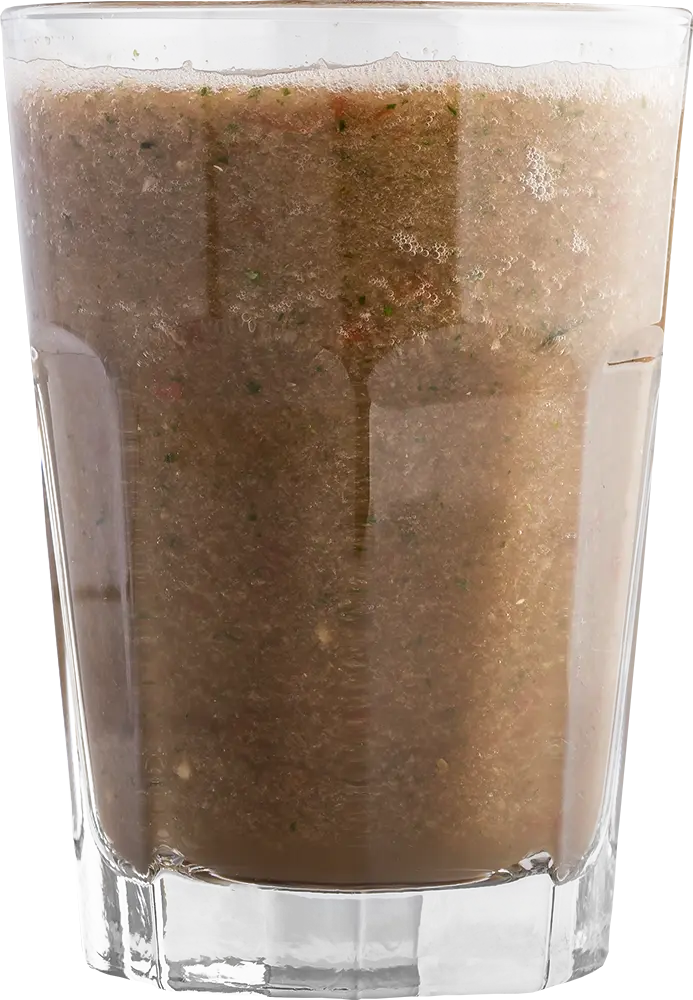
10g
Carbs
Watermelon Mary Smoothie
Weight = 380g
Carbs = 10g
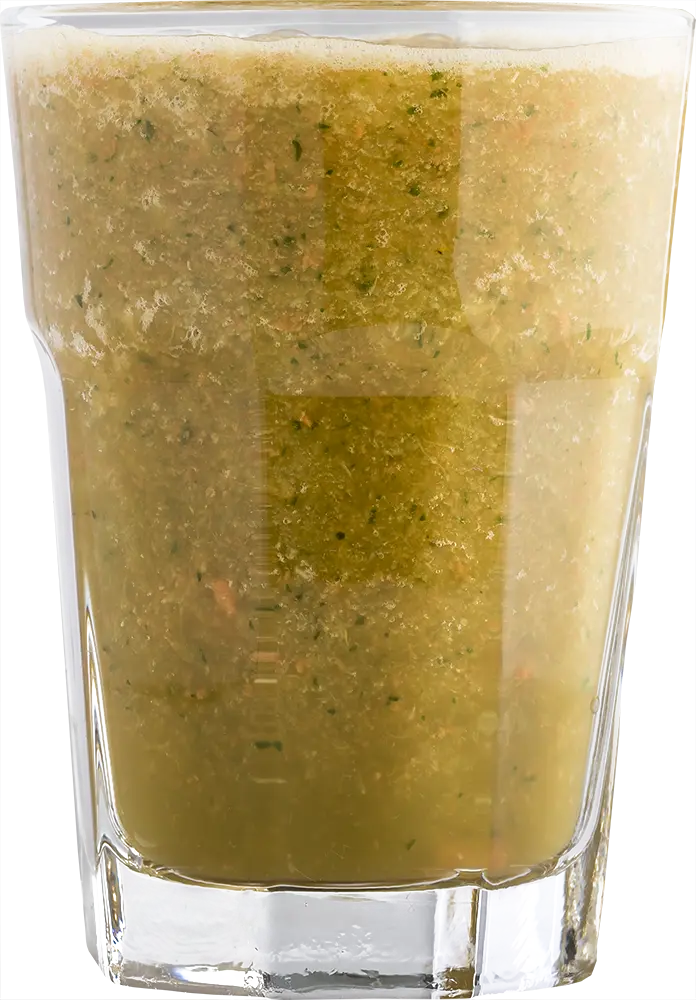
11g
Carbs
Carrot & Cucumber Cooler
Weight = 380g
Carbs = 11g
What about carbs in tomatoes?
Tomatoes have a variety of health benefits and are also extremely versatile. They are used extensively in many dishes, both cooked and uncooked. Like avocados, they are technically fruits but usually consumed as vegetables. Whether fresh, tinned or dried, they contain a very small amount of carbs.
In addition, tomatoes are a good source of vitamin C, vitamin A and vitamin K. They are also high in potassium, which can help reduce blood pressure. Finally, they are an important source of lycopene, which is an antioxidant.
Below you can see the carbs in cherry tomatoes, tinned tomatoes and sundried tomatoes. Tinned tomatoes may look like they contain more carbs, but the serving size is larger than the other examples.
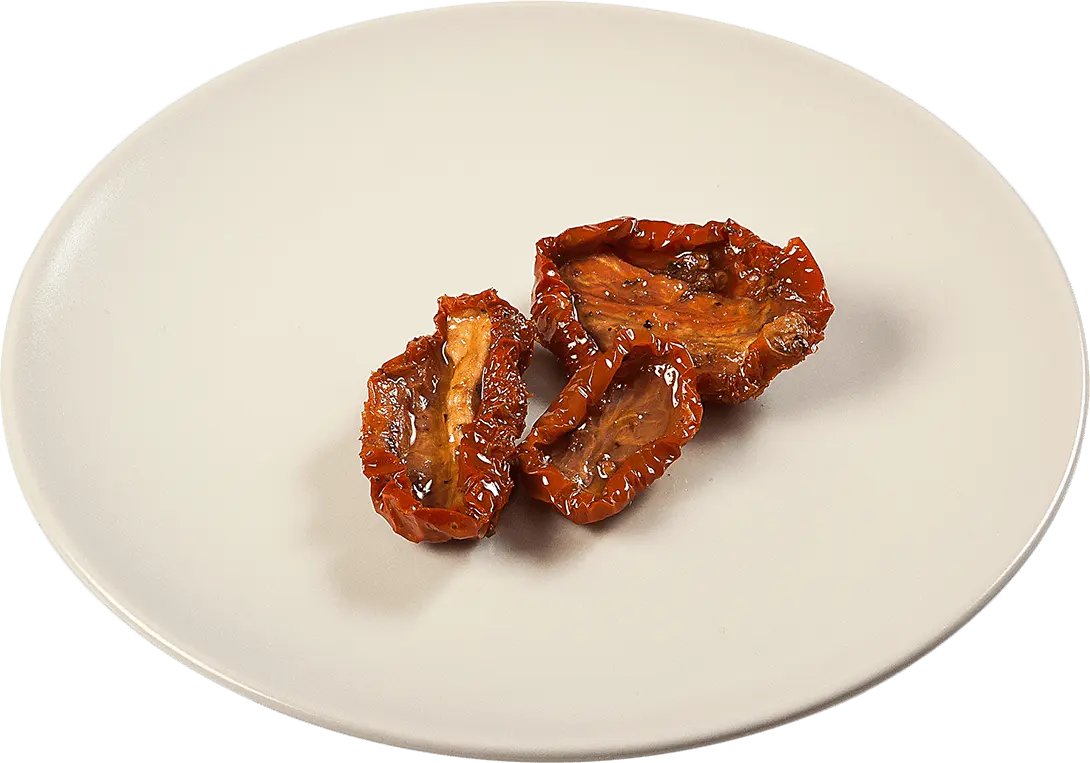
2g
Carbs
Sun-Dried Tomatoes
Weight = 25g
Carbs = 2g
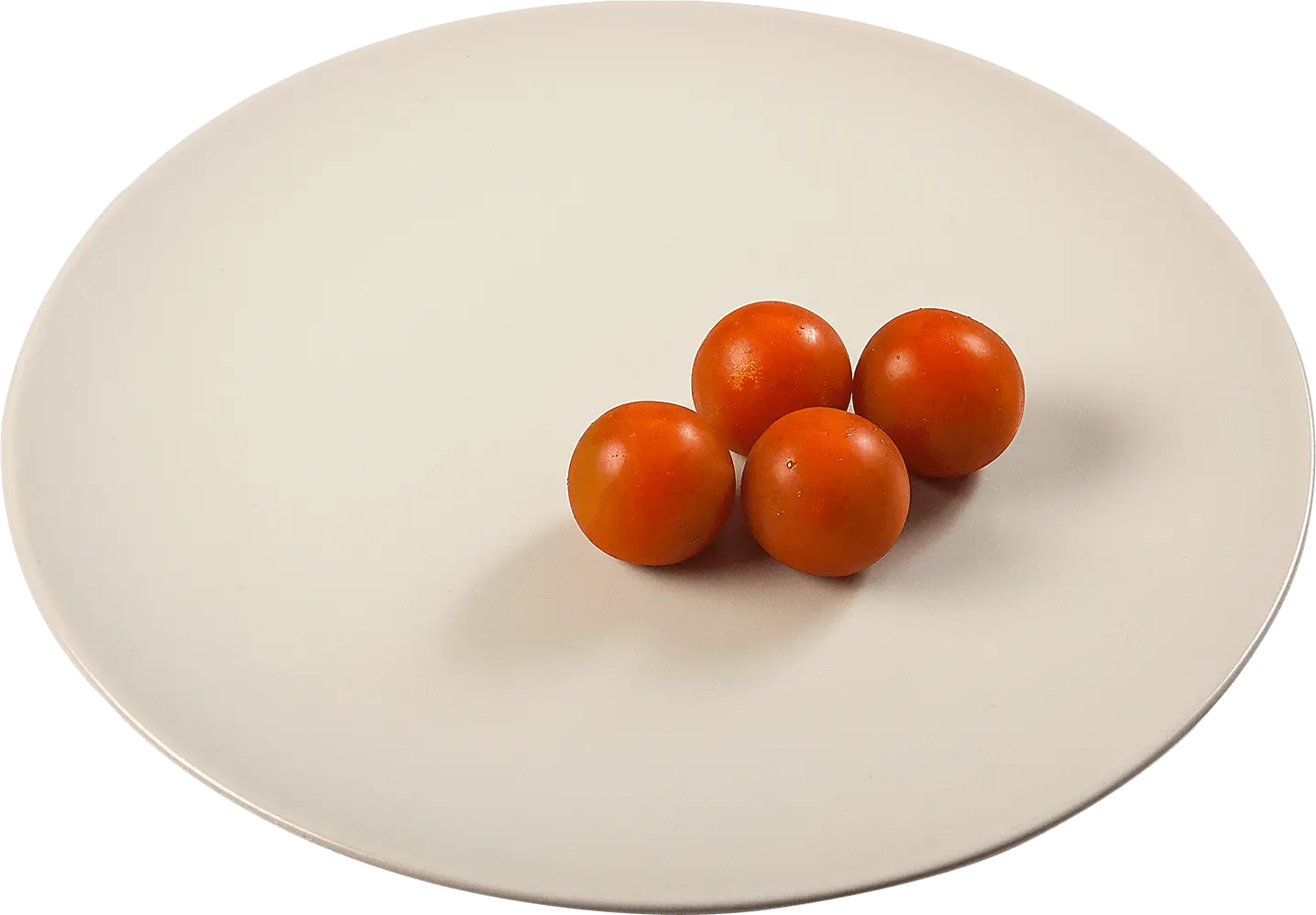
3g
Carbs
Cherry Tomatoes
Weight = 80g
Carbs = 3g
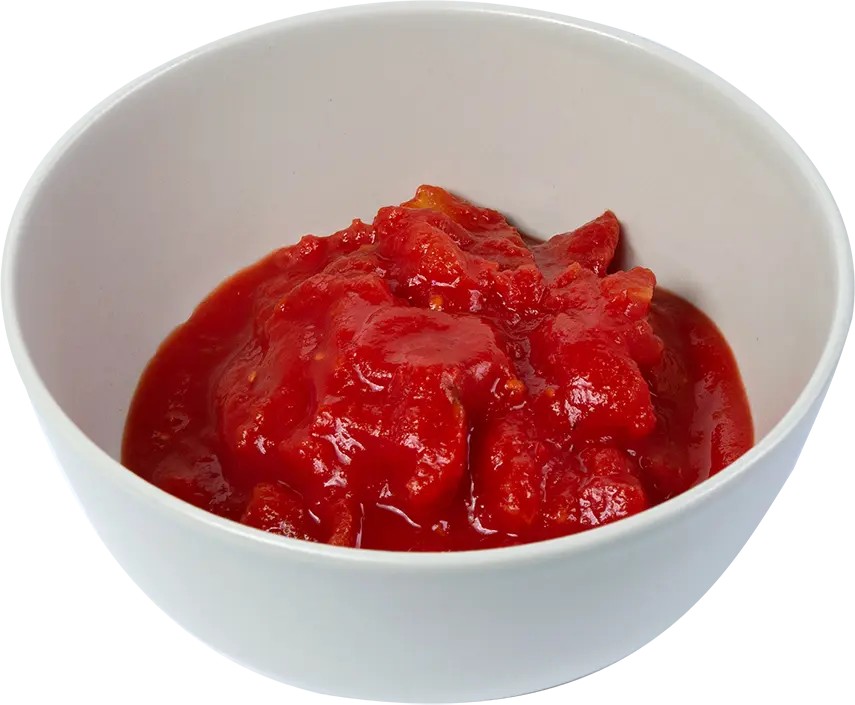
8g
Carbs
Chopped Tomatoes
Weight = 200g (½ tin)
Carbs = 8g
The best low carb vegetables for your diet
If you are following a low carb diet, you may be looking for alternatives to high carb foods such as rice, pasta and potatoes to have with your main meals.
Vegetables can be a great substitute to help cut down on carbs. For example, butternut squash or swede can be roasted, boiled or mashed as a low carb replacement for potatoes or sweet potatoes.
Cauliflower is one of the most versatile and popular low carb vegetables and makes an excellent alternative to rice. Cauliflower rice can be bought pre-prepared or can easily be made at home with a food processor. Sliced vegetables, such as courgette and aubergine, can be used in place of pasta sheets in a lasagne or cannelloni.

1g
Carbs
Courgette
Weight = 80g
Carbs = 2g
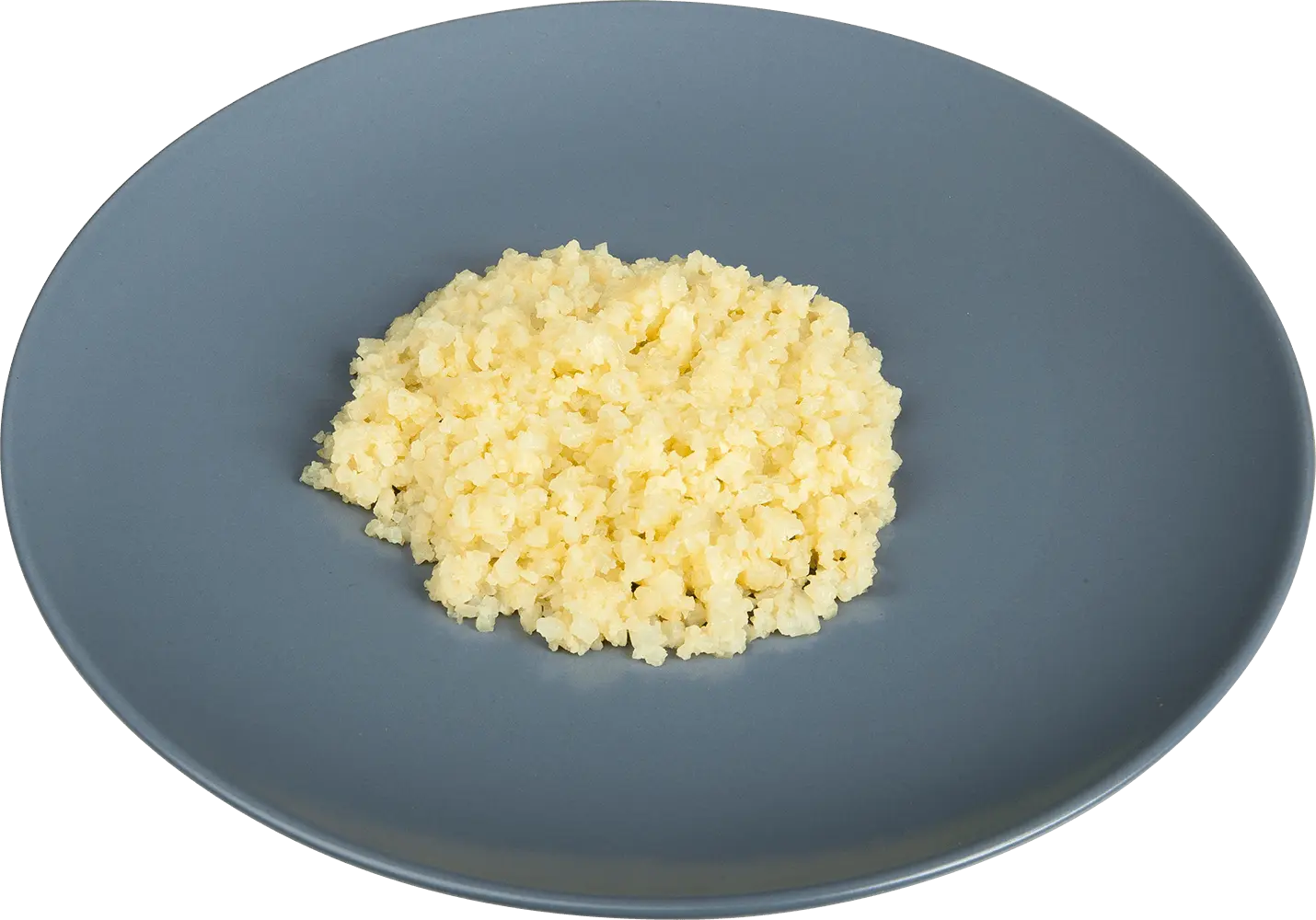
3g
Carbs
Cauliflower Rice
Weight = 100g
Carbs = 3g
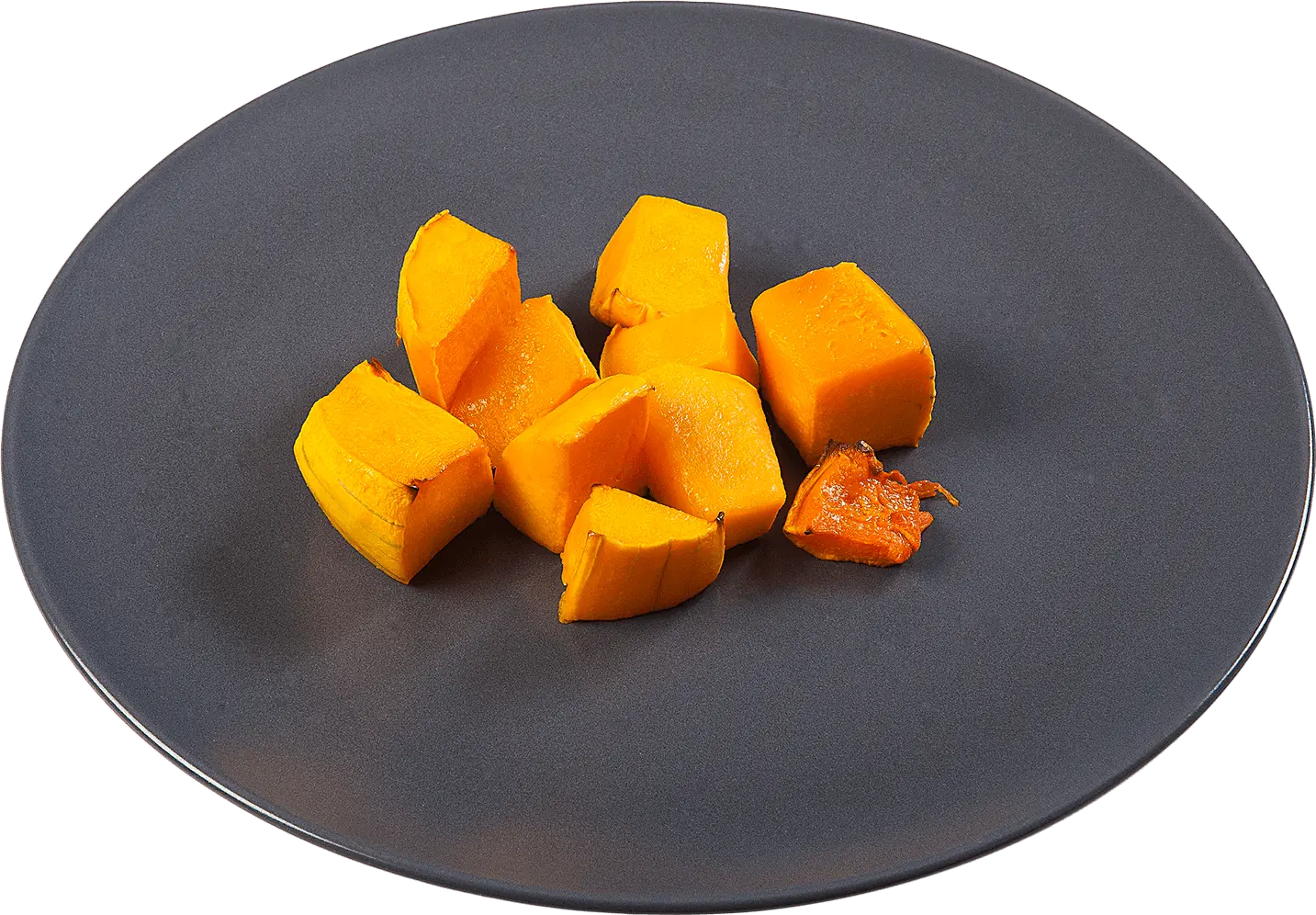
10g
Carbs
Butternut Squash (roasted)
Weight = 130g
Carbs = 7g
Incorporating vegetables in salads
The majority of salads contain some form of vegetables, either cooked or uncooked. There is a vast range of options from a simple tomato and basil salad to more complex ones, such as roasted vegetable satay. Salads can be a great way to get your daily vegetable requirements, and generally contain fewer carbs than a lunch of a sandwich, crisps and fruit.
Classic salad items include various types of lettuce, radish, tomato, celery, sprouts, cucumber, avocado and carrot. But other vegetables such as squash, broccoli, cauliflower, fennel and asparagus can all be used.
The Carbs & Cals Salads book has 80 healthy salad recipes, all showing the carb values. You can also use the book to build your own great-tasting, carb-counted salads. The salads shown below are all taken from the book and contain a range of carbohydrate amounts.
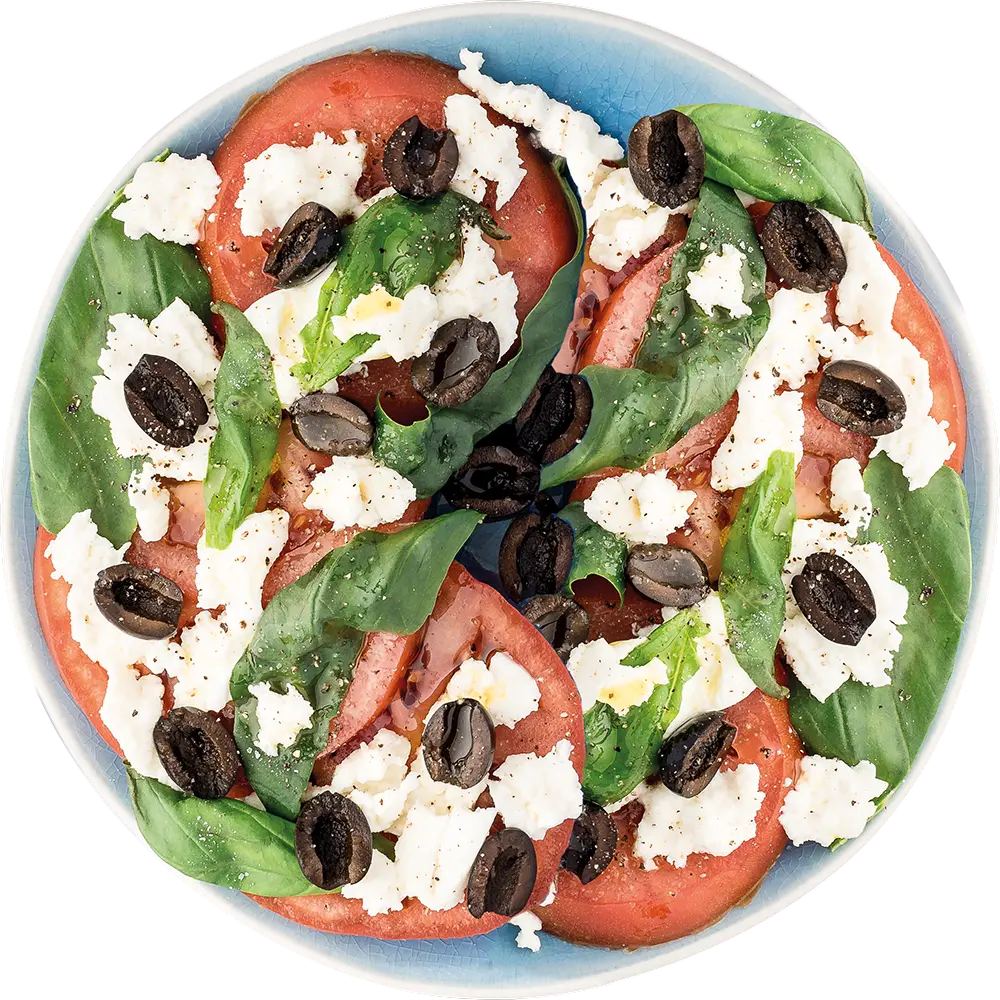
6g
Carbs
Tomato & Basil Salad
Weight = 285g
Carbs = 6g
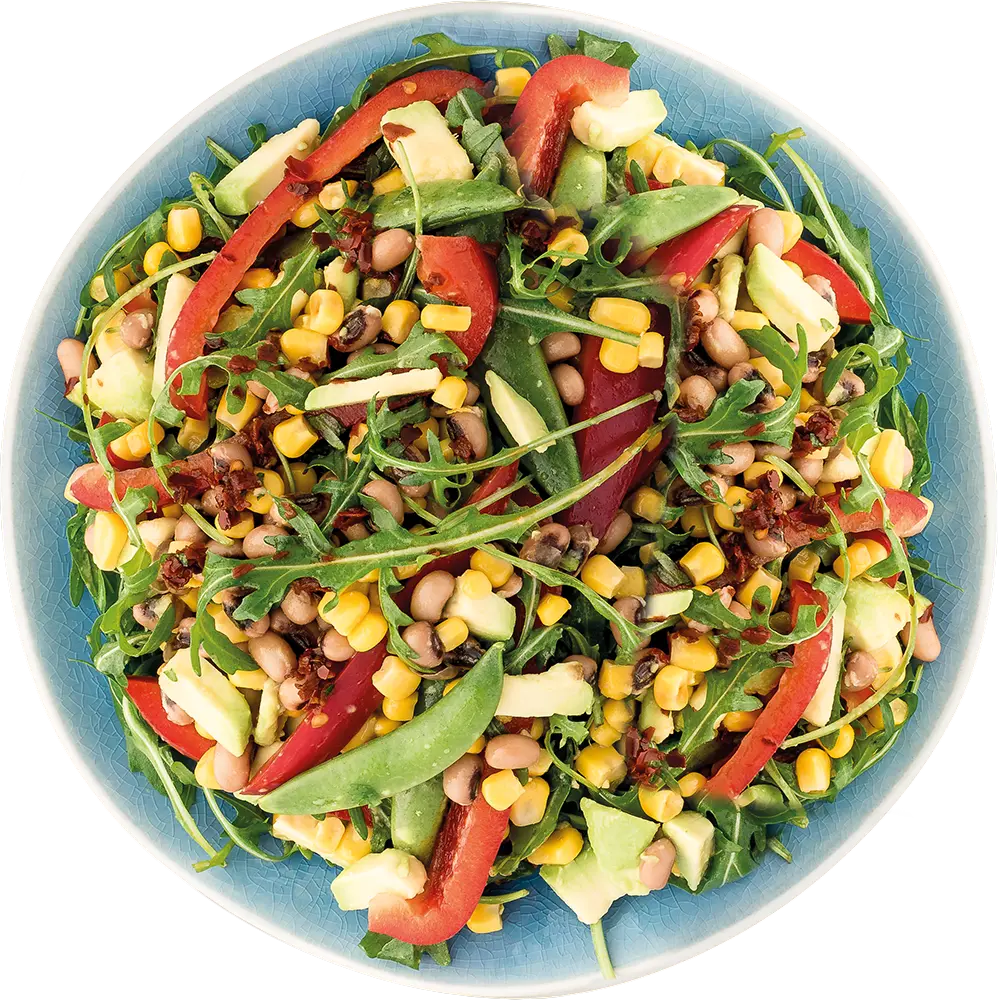
18g
Carbs
Fiery Fiesta Salad
Weight = 365g
Carbs = 18g
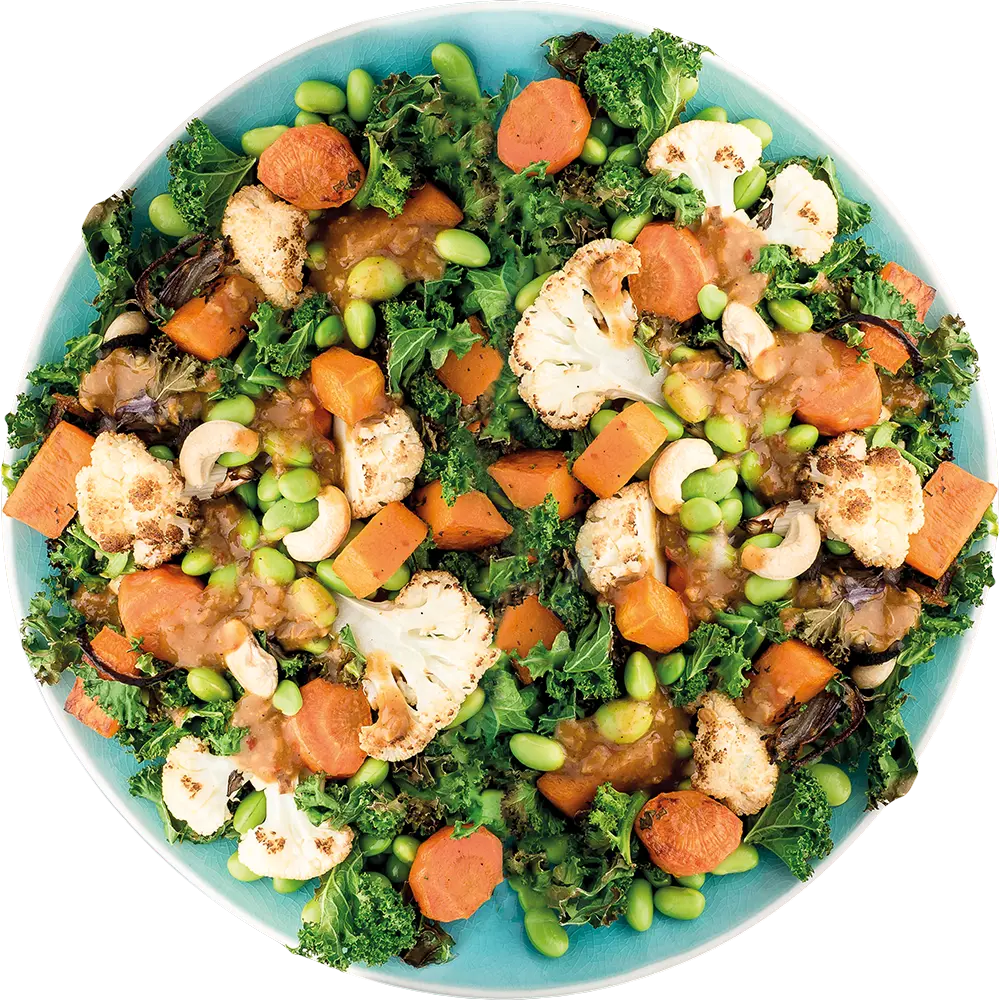
29g
Carbs
Roast Veg Satay Salad
Weight = 380g
Carbs = 29g
SLURP UP YOUR 5-A-DAY!
Smoothies Book
The only smoothie recipe book you’ll ever need – includes low carb veg-based smoothies!
- 80 tasty smoothie recipes.
- Nutritional info clearly shown for each smoothie.
- 275 individual ingredient photos to create your own smoothie!
With this bestselling recipe book, whizzing up scrumptious and nutritious smoothies is a breeze!
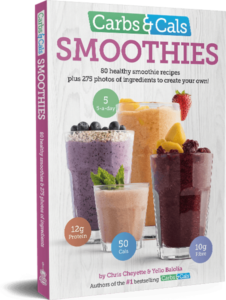
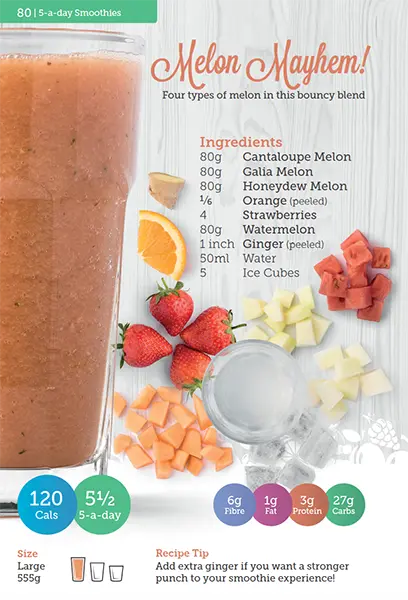
80 delicious smoothies!
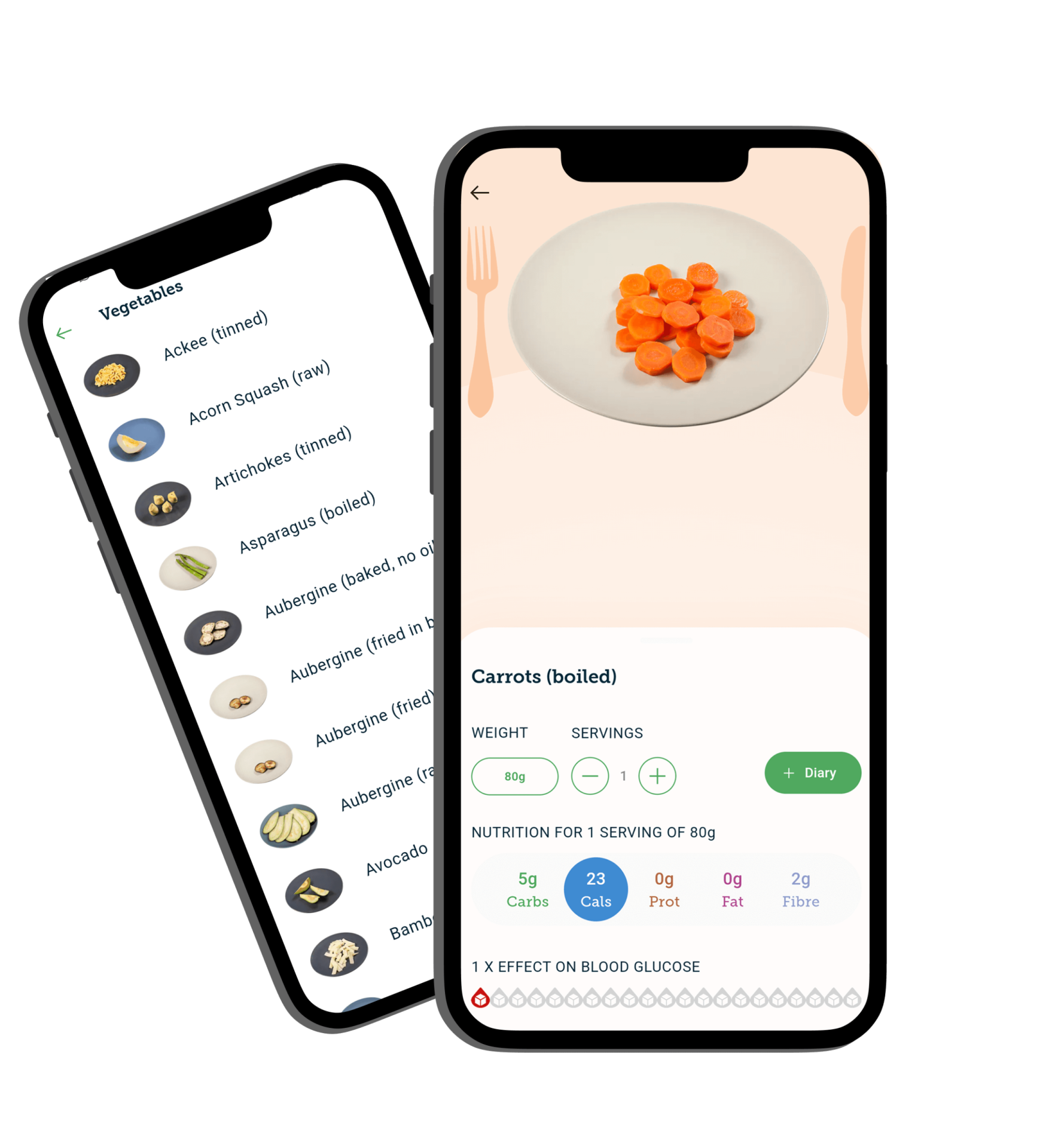
Sign up to the Carbs & Cals mailing list
Want to learn more about carb counting and the role of food in managing your health? Sign up to our mailing list!
